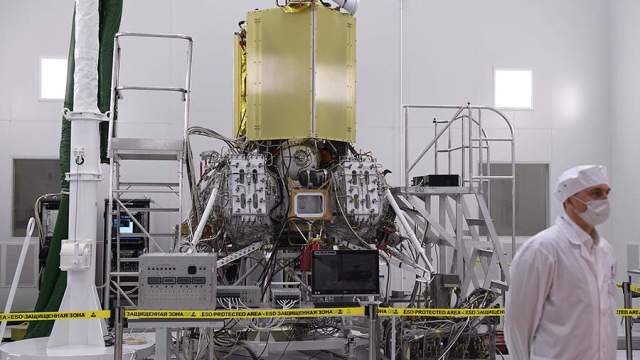Experts discovered a malfunction during tests of the Doppler speed and range meter (DISD-LR), designed to ensure a soft landing of the Luna-25 spacecraft. This was reported to TASS on November 13 in the press service of Roscosmos.
It is noted that at present, in the S.A. Lavochkin NGO, where the device was delivered, together with its manufacturer, Concern Vega JSC, its entrance control is carried out, as well as performance testing on a low-altitude stand.
"Taking into account the comments received, the investigation of the causes of the malfunction and their elimination, the completion of the entrance control is scheduled for November 22, 2021," Roscosmos added.
According to the agency's source, the malfunction of the device lies in the fact that it did not show "correct data during the descent from the tower."
November 3, Head of the Department of Nuclear Planetology of the Institute of Space Research (ICI) Igor Mitrofanov of the Russian Academy of Sciences reported that the date of sending the Luna-25 interplanetary automatic station to the Earth's natural satellite could be May 25, 2022.
On October 5, the head of Roscosmos, Dmitry Rogozin, announced that the Luna-25 automatic station would be launched in July 2022.
Initially, it was planned to launch the Luna-25 automatic interplanetary station from the Vostochny cosmodrome in October 2021, but in August, Roscosmos announced the postponement of the launch date to May 2022.
At the same time, it was reported that additional research was needed, including taking into account the ballistic conditions of the flight to the Moon.
The press service of Roscosmos also noted that the project will open a long-term lunar program, which will include missions to study the Moon from orbit and surface, as well as the collection and return of lunar soil to Earth, and in the future, the construction of a visited lunar base and full-scale development of the Earth satellite, including in cooperation with the Chinese National Space Administration as part of a large-scale project to create an International Scientific Lunar Station.
The Luna-25 spacecraft consists of two main parts, the lower of which is a landing device in the form of a structure with landing "legs" - supports that ensure safe contact with the surface, and the upper one is an unpressurized instrument compartment. The main task of the mission is to develop basic soft landing technologies in the near-polar region and conduct contact studies of a given area of the South Pole of the Moon.

